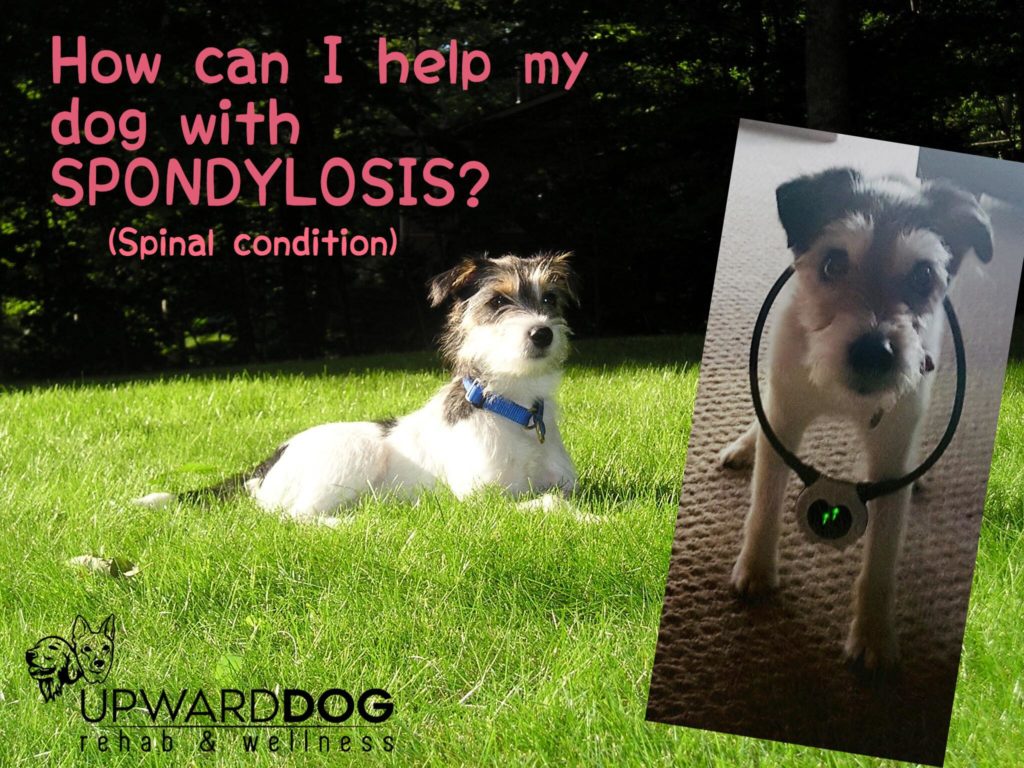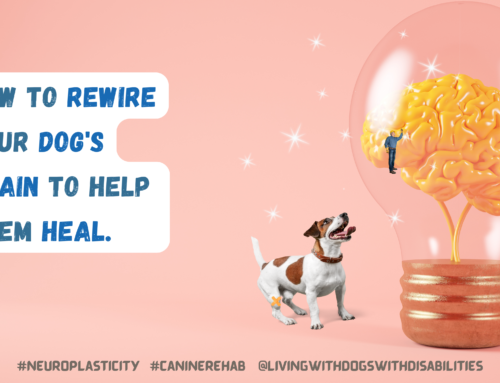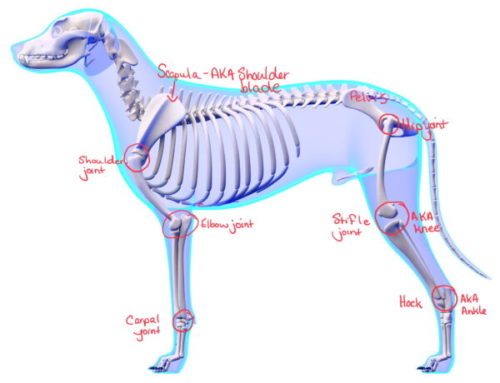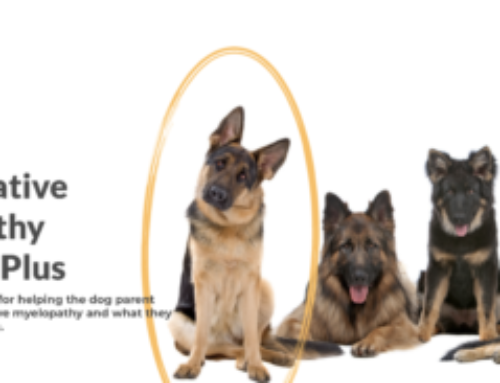Please welcome Lola to the Upward Dog Pack! This 16yo cutie has had some difficulty with coordination and weakness in her hind end as a result of a condition called spondylosis in her thoracic spine (mid spine where ribs attach). What is spondylosis? One might call it “age related changes” in your dog’s spine caused by everyday wear and tear and/or past trauma. Below is a little information on what the condition is, how it might look and what to do. Please note that this is general information and that it’s still important to seek out medical assistance.
SPINE ANATOMY Between each vertebrae is a disk. The disk is cushy, acting as a shock absorber. It also supports both spinal mobility and stability. A disk (or maybe a few) have thinned. When this happens, the body tries to restabilize the affected area(s) by developing bone spurs (OSTEOPHYTES). In some cases they become big enough to create a bridge between two vertebrae.
SIGNS & SYMPTOMS. This is a condition that usually affects older dogs. Sometimes the condition doesn’t cause any problems at all. In other cases, BONE SPURS may put pressure on SPINAL NERVES causing pain and possibly NEUROLOGICAL DEFICITS. What does neurological deficit mean? Nerves travel from the spine to different areas of the body. In cases where the nerve is compressed (pressure), it can cause altered and sometimes painful sensation anywhere along the nerve path. This means an affected dog may have some back pain AND/OR may also have pain in another area of the body/limb. Other neurological signs include (but aren’t limited to): decreased muscle activity which can lead to ATROPHY (wasting), challenges with coordination and balance (ATAXIA) , and decreased body awareness (PROPRIOCEPTION). In more serious cases, BOWEL/BLADDER FUNCTION can be affected and a dog may completely loose coordination/use of their affected legs (PARALYSIS). This is VERY SERIOUS and if your dog has symptoms take your dog to the VET IMMEDIATELY. A dog may also hunch their back, carry the head low, have decreased movement anywhere along the spine, back pain, neck pain and/or pain in an affected limb.
WHAT SHOULD I DO: Spondylosis generally occurs overtime and the small changes go unnoticed. Like most conditions, EARLY INTERVENTION/REHAB is key to improving function and quality of life. It is also IMPORTANT TO NOTE that this is only one condition that can cause the signs and symptoms mentioned. There are MANY CONDITIONS THAT CAN AFFECT THE SPINE. Early intervention and DIAGNOSIS can aid in designing a TAILORED REHAB PLAN, ensure you are not dealing with a MEDICAL EMERGENCY, and IMPROVE/MAINTAIN QUALITY OF LIFE for you dog. I can’t emphasize enough that signs of back pain and neurological deficits should not be ignored. There are conditions that can cause COMPRESSION OF THE SPINAL CORD and require IMMEDIATE MEDICAL ATTENTION.
REHAB: There are many conservative ways to help your dog if they are diagnosed with spondylosis (i.e. massage, acupuncture, strength/balance exercises, traction, etc). Work with a CANINE REHAB PROFESSIONAL to design a TREATMENT PLAN that is APPROPRIATE FOR YOUR DOG and the stage of the condition.
Looking for more help? PM us @UpwardDogRehab or find us online at www.upwarddogrehab.com
Good luck!





